Midlayers are those vital pieces of clothing that are there to keep you warm on the hill, whether it’s as the main item or part of a layering system under a waterproof.
We put a wide range of jackets, microfleeces and tops to the test in the hills to see how they performed.
We rated the midlayers mostly on how warm they kept us and how well they kept out the rain. None of them are waterproof – you’ll need a shell jacket to go over the top of them when it rains – though some of them could repel a short shower.
Many can be worn on their own too or as a base layer, next to the skin.
The variety of designs shows the variation in approach of the different brands to creating this vital piece of outdoor kit.
Every one of the midlayers performed at least adequately on the hill, so which you might find best for you will depend perhaps on the use to which you intend putting it. You may not want the warmest of tops if you expect to be walking or climbing in milder temperatures.
Or you may want a jacket that doubles up as a piece of street- or every day wear. Style is a personal thing and, though we have indicated our likes in this area, we haven’t used it to rate the various midlayers.
There was not a huge variation between the best performers and those that did less well in this test, an indication that all were suitable to the task.
All the midlayers featured were supplied to grough by the brands.
Bergans of Norway Einer Jacket
Colour: navy blue/green
Weight: 590g (size L)
Price: £120
Material: wool 40 per cent; polyester 40 per cent; polyester 18 per cent; polyamide (nylon) 2 per cent
Country of manufacture: Turkey
Recommended wash: 30C wool wash; cool iron
As with other Bergans of Norway kit we’ve tested, the Einer Jacket has a quality feel and nice Scandinavian styling.
Bergans markets the jacket as an alternative to synthetic fleeces and, with 40 per cent wool in its make-up, it certainly has a cosy feel.
The wool means it’s quite heavy but it does give a nice natural look to the jacket, and the inner face of the fabric has a cosy feel.
The Einer is cut longer at the back and the jacket has two zipped handwarmer pockets. Its sleeves have thumb loops to help keep hands warm and the collar is generously high to keep the wind out.
The whole garment is quite stretchy so there is no impeding when moving up scrambly routes.
Bergans says the Einer can be used either as a midlayer or an outer jacket and the style lends itself to wear in the street as well as on the hill.
One bind may be that it should be washed on a woollen cycle which means either laundering it separately or putting all your load on a gentler wash.
Not the warmest of jackets and its windblocking properties were only moderate, but good on intermediate days when you might otherwise overheat.
Warmth 18/30
Windblocking 18/30
Weight 5/10
Quality 9/10
Value for money 15/20
Total score: 65/100
Berghaus Caudale Half-Zip Fleece Pullover
Colour: green
Weight: 322g
Price: £45
Material: 100 per cent polyester
Country of manufacture: Indonesia
Recommended washing: cool machine wash in non-biological washing powder; no fabric conditioner; cool iron
The Caudale is a conventional microfleece that is suitable as part of a layering system. It’s warm enough to wear on its own on moderate days but will also perform well under a waterproof shell.
Our sample came in a vivid green so others will certainly spot you in the distance. There’s a fair amount of stretchiness in the top, which also has elasticated cuffs and bottom hem. The Caudale is again cut longer at the back and also has a high collar which zips up to keep out the wind.
Other than that, the top is a no-frills microfleece that performed well and does the job for which it’s designed.
There is a tiny zipped pocket, just big enough with a bit of effort to squeeze a Type 4 compass into, though it’s an example of design over function in our view.
In our tests, we found fleece material blocked the wind better than many other fabrics and, for its weight, the Caudale was a warm midlayer.
Warmth 21/30
Windblocking 21/30
Weight 8/10
Quality 7/10
Value for money 17/20
Total score: 74/100
Craghoppers Corey II Microfleece
Colour: blue
Weight: 335g
Price: £25 (but on offer at 12.50 at time of publication)
Material: 100 per cent polyester
Country of manufacture: Bangladesh
Recommended washing: cool machine wash; no iron
The Corey II is the latest version of Craghoppers’ bestselling midlayer microfleece.
It’s a lightweight, no-frills, stretchy fleece that coped well under a shell and is warm enough to use as an outer layer on a breezy day on the hills when the weather’s not too cold.
There are no pockets, nor are the cuffs or hem elasticated, but the collar is high enough to keep out the wind.
The fabric is very soft to the touch and comfort is very good. As with other fleeces, the windblocking properties on the hill were good.
The one question mark over the Corey II was that it exhibited quite a bit of pilling of the fleece (bobbling as they used to say on the washing-powder ads), particularly in areas where there had been rubbing, such as under the arms. This may be due to the softness of the fleece material, but I was certainly noticeable.
Warmth 17/30
Windblocking 19/30
Weight 8/10
Quality 4/10
Value for money 17/20
Total score: 65/100
Helly Hansen H2 Flow Jacket
Colour: orange
Weight: 390g
Price: £130
Material: 100 per cent polyester
Country of manufacture: China
Recommended washing: lukewarm machine wash; no fabric conditioner; no iron
The H2 Flow is the most unusual midlayer in the test. The jacket can be found on Helly Hansen’s inshore racing section of its website, but it’s also aimed at mountaineers and anyone wanting a combination of cooling and heat retention when working hard on the hill.
If it’s dry, the H2 Flow can be worn as an outer jacket and will repel a light shower with its polyester ripstop shell or the jacket can be worn as an element in a layered system.
Under the shell is a white mesh liner but it’s what’s under that that marks out the jacket.
The 200g Polartec fleece has a pattern of holes – the jacket has the look of Swiss cheese when held up to the light. These holes are concentrated in the torso area and the H2 Flow’s side panels are without this insulation.
The sleeves are without the special Polartec too, but are fully lined.
On the front of the jacket are two long zipped vents.
The idea is that you manually adjust the amount of air getting into the garment depending on how warm you are.
The holes are also meant to trap air too so help keep you warm when the temperature drops if you zip the whole thing up to allow the shell to keep in warm air in the Polartec layer.
The holes in the fleece also help reduce the jacket’s weight.
If all this sounds very complicated, it isn’t in practice. If you feel warm, unzip; if you’re cold, close the zips.
We found opening the vents really did make a difference and let in quite a bit of breeze to help cool us down. The windblocking properties of the jacket were quite good and overall its warmth was pitched somewhere in the middle of the range.
Worn under a waterproof shell, the breathability is determined by the outer layer, which is almost always the least able to clear perspiration, so the H2 Flow is less successful in warm, wet weather. But on a cool wet day, the warmth under a shell was good.
Where this jacket works best is on a dry day when working hard going up the hill, when its venting properties really will make a difference. Once at the top, the H2 Flow will keep the heat in unless it gets pretty cold.
The jacket has two zipped, mesh-lined pockets though, as these sit outside the Polartec layer, they won’t keep your hands particularly warm.
An interesting jacket, though pricey, the most expensive in the test.
Warmth 20/30
Windblocking 19/30
Weight 8/10
Quality 7/10
Value for money 15/20
Total score: 69/100
Helly Hansen Mount Prostretch Jacket
Colour: red
Weight: 295g
Price: £60
Material: 100 per cent polyester
Country of manufacture: China
Recommended washing: 40C lukewarm machine wash; no iron
The Mount Prostretch is a much more conventional offering from Helly Hansen.
The jacket is a very comfortable lightweight microfleece in Polartec 100g fabric, with a full-length zip, two zipped side pockets and two inside pockets that pass the OS laminated map test ie they will take one.
The jacket is cut fairly short, so it doesn’t impede movement when on scrambly terrain, and is, as you would expect from Helly, well made.
The stretchy fabric is very soft but showed no signs of pilling during our test. Its tight weave blocked the wind well and is overall quite a warm midlayer.
It will perform as a single layer on cool days or as part of a layering system when the temperature drops more.
The very top section of the zip has a baffle to keep out the wind from the neck area.
The hand pockets are fully lined to help keep hands warm.
A very competent piece of kit, the Mount Prostretch will work well both as a single layer and as a midlayer.
Warmth 20/30
Windblocking 21/30
Weight 9/10
Quality 7/10
Value for money 17/20
Total score: 74/100
Kathmandu Apiro Jacket
Colour: green
Weight: 445g (size M)
Price: £44.99
Material: 96 per cent polyester, 4 per cent Elastene
Country of manufacture: Vietnam
Recommended washing: 30C machine wash; no iron
The New Zealand brand’s Apiro uses its own Altica 100 fabric, with a knitted face that gives it the look of a softshell rather than a fleece.
The jacket is designed with chest panels sewn in and is quite long, and the internal fabric is brushed to give extra warmth.
Although Kathmandu has made the Apiro for layering under a shell, it also clearly had one eye on street use and one of the two zipped, mesh-lined hand pockets has a cord port for earphones etc.
The sleeve cuffs are quite wide, allowing a little ventilation, but overall the jacket is one of the warmer ones we tested. Seams are positioned to minimise chafing and discomfort.
Two internal pockets will each take a laminated OS map – just.
The windproofing is very good and the Apiro will keep the heat in on cooler days.
The Apiro is a well made jacket that is just at home on the street as on the hill.
Warmth 22/30
Windblocking 21/30
Weight 5/10
Quality 7/10
Value for money 17/20
Total score: 72/100
Patagonia R1 Hoody
Colour: red
Weight: 357g
Price: £110
Material: 93 per cent polyester, 7 per cent Spandex
Country of manufacture: Colombia
Recommended washing: 30C machine wash; no iron
Some pieces of kit demonstrate they were designed by people who understand the needs of the outdoor enthusiast and the R1 Hoody is one of these.
At first glance, this looks like a fairly average fleece pullover with the addition of a hood, but inspect it more carefully and it reveals a host of design features.
Most of the garment is made from Polartec Power Dry, with its raised pattern of squares on the inner face, which help with wicking and breathability. But at various points, including the bottom of the main body and at the sleeve cuffs, the fabric changes to a thinner version with much smaller grid pattern.
This makes it more breathable and also helps it dry out more quickly. If you think about it, with sleeves in particular, the wetness tends to gravitate to the ends so making this thinner makes sense.
The sleeves, which have thumb loops, are also designed to push up easily when cooling is needed.
The torso of the R1 is lengthened to make it easier to wear with a harness, and the redesigned hood is pretty much like a balaclava, coming right up to just below the nose when pulled all the way up. The zip is offset slightly at the top so the puller doesn’t sit right below the nose and there is a soft chin guard.
The hood has been reshaped to accommodate a helmet chin strap more comfortably.
The squared pattern extends, with a much lower profile, to the outer face too and the whole garment feels very stretchy. It’s an athletic fit, which means it hugs the body (and shows up any curves you perhaps wish you didn’t have), which helps keep it windproof too.
The R1 was one of our warmer midlayers on test, but venting is possible by pulling down the half-length zip and rolling up the sleeves.
On the hill, the snug-fitting hood stayed up in high winds despite the lack of a drawcord – thanks to its balaclava-style design.
As with many of the midlayers, on a cool dry day the R1 Hoody will be all you need as a top, especially if moving quickly and building up a sweat.
The top will also work as part of a layering system under a waterproof shell and the hood is a useful addition to help keep warm especially when the wind is driving into your face.
But because the Patagonia hoody is quite long, it may extend below many modern waterproof shells, especially those aimed at multi-activity users.
The R1 Hoody is well constructed and, as you might expect from a company with some of the best ethical credentials, is made from 41 per cent and 54 per cent recycled polyester respectively for the thicker and thinner parts of the garment.
Warmth 22/30
Windblocking 21/30
Weight 8/10
Quality 9/10
Value for money 16/20
Total score: 76/100
Result Micron Fleece
Colour: black
Weight: 300g
Price: £11.90
Material: 100 per cent polyester
Country of manufacture: not known
Recommended washing: 30C machine wash; no iron
What can we say about the Result Micron? It won’t win any fashion competitions; it is a no frills, basic 200g-fleece, and you can buy it for less than £12.
It has no outstanding design features; it is a bog standard fleece jacket. The material is not especially warm but is good enough to keep you at a good temperature on a coolish-day.
Windblocking was moderate too, thanks to the fairly tightly knit material.
The jacket is not very long, but there are two hand pockets, though they’re not zipped.
This bargain-basement jacket performed surprisingly well on the hill and will work just fine as part of a layering system as long as you’re not expecting outstanding performance.
Warmth 15/30
Windblocking 16/30
Weight 8/10
Quality 3/10
Value for money 19/20
Total score: 61/100
Sherpa Amdo Tech Zip
Colour: blue
Weight: 540g
Price: £90
Material: 100 per cent polyester
Country of manufacture: Nepal
Recommended washing: 40C machine wash; no fabric conditioner; no iron
The Amdo is a good-looking jacket and actually has the air of a woollen garment, but is actually made from sweater-knit Polartec Thermal Pro fleece.
Its design is fairly minimalist: there are just two hand-warmer pockets, with zips and fleece lining, and one small zipped chest pocket, big enough for, say, a mobile phone.
The front of the torso section is lined and the rest of the inner fabric is the brushed rear face of the fleece material.
There is a drawcord round the hem of the garment to help keep the breeze from wafting up, and the jacket is a fairly long design.
The Nepalese influence of the jacket is evident and it would look just as good worn around town as on the hill.
Out on the hill, the warmth of the Amdo was good, as was its windproofing. The quality of the Kathmandu-made jacket felt good too and the fabric showed no sign of pilling.
Sherpa Adventure Gear is building a reputation for well designed, fairly minimalist gear at reasonable prices, and the Amdo fits this model.
Warmth 19/30
Windblocking 18/30
Weight 5/10
Quality 8/10
Value for money 17/20
Total score: 67/100
SmartWool NTS Mid 250 Zip T
Colour: grey
Weight: 290g
Price: £70
Material: 100 per cent merino wool
Country of manufacture: Vietnam
Recommended washing: 40C wool-cycle wash; cool iron
The NTS Zip T was the thinnest of the midlayers tested and is really a baselayer that doubles as a midlayer.
As one of SmartWool’s thickest baselayers, the top is designed for use as a single layer in cold weather, and will also serve as a baselayer in the coldest of situations.
Its merino wool construction worked well in wicking moisture and was also fairly efficient at blocking wind.
It’s a snug fitting top that hugs the body to allow the wool to work at its best, and is cut quite long. For a thin garment it was surprisingly resistant to wind and is very comfortable with the inner face of the stretchy fabric nice and smooth – no itchiness like you used to get with old woollies.
The merino wool does also cope well with resisting odour build-up, though when wet we did experience that slightly odd ‘wet sheep’ fragrance we have experienced with other merino products.
SmartWool have improved the design of the NTS Zip T to get rid of the seams on the tops of the shoulder, so it’s more comfortable when carrying a pack.
The 25cm zip allows for ventilation and the sleeves are easily rolled up.
Used under a waterproof shell jacket, the thin, stretchy top felt nicely unrestrictive and kept us fairly cool when pressing up the hill.
The 250 in the garment’s title relates to the 250g/sq m fabric used, which sounds thick compared to synthetic fleeces but is actually classed as midweight by SmartWool, merino wool being naturally heavier than yarns such as polyester and was the lightest garment in our test.
We liked the unrestricted feel of the NTS Zip T and it worked well worn both singly and as a baselayer under a waterproof. We don’t recommend wearing a baselayer under it however, as it’s designed to work best worn next to the skin
Warmth 19/30
Windblocking 17/30
Weight 9/10
Quality 8/10
Value for money 16/20
Total score: 69/100
The North Face Infiesto Full Zip Jacket
Colour: blue/black
Weight: 390g
Price: £75
Material: 100 per cent polyester
Country of manufacture: Vietnam
Recommended washing: 40C wash; no iron
The Infiesto Jacket is designed either to be worn next to the skin or over a base layer, depending on the outside temperature.
It’s another snug fitting, stretchy top that uses Polartec Power Dry midweight fleece, though the material doesn’t look at all like traditional fleece.
It has a fairly open, boxy knit that allows good wicking and it worked well at keeping us warm under a waterproof shell.
We preferred wearing the Infiesto next to the skin, and on a cool day out on the hill, it provided good warmth worn as our only garment.
Windblocking worked better than we expected, given the fairly open knit of the fabric.
Although the cuffs are fairly loose, it wasn’t as easy to pull up the sleeves of the Infiesto as some of the other stretchy tops.
The jacket has two zipped handwarmer pockets and also a pair of internal pockets big enough each to take our test OS maps.
The Infiesto is another jacket designed for high activity on the hills and its fabric did shift the sweat well, especially when worn next to the skin.
Once again, The North Face jacket is stylish enough to consider for street wear too.
Warmth 18/30
Windblocking 16/30
Weight 7/10
Quality 7/10
Value for money 17/20
Total score: 65/100
The top performing midlayer in our tests was the Patagonia R1 Hoody, a result that reflects the care with which the garment has been designed and made.
Close behind were a clutch of tops including the Helly Hansen Mount Prostretch Jacket, a good conventional fleece; the Berghaus Caudale Half Zip, a very reasonably priced microfleece; the offerings from Kathmandu, and SmartWool and the unusual Helly Hansen H2 Flow, which will appeal to a very specific kind of hillgoer – or sailor even.
All of the others did what was asked of them, even the remarkably priced Result fleece.
For style and cool, our personal choice would be the Bergans or Sherpa jackets. Your view may differ.
Best in test: Patagonia R1 Hoody
Recommended: Berghaus Caudale Half Zip
Recommended: Helly Hansen Mount Prostretch Jacket
Recommended: Kathmandu Apiro Jacket
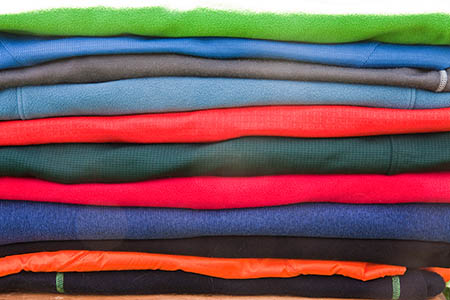
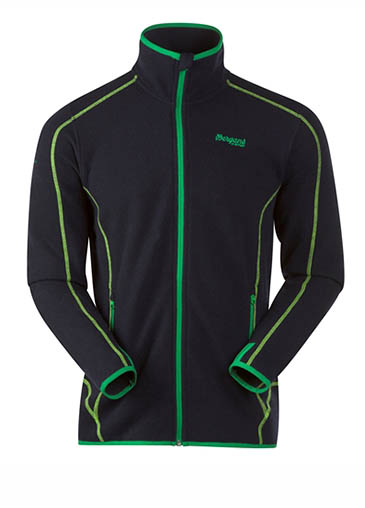

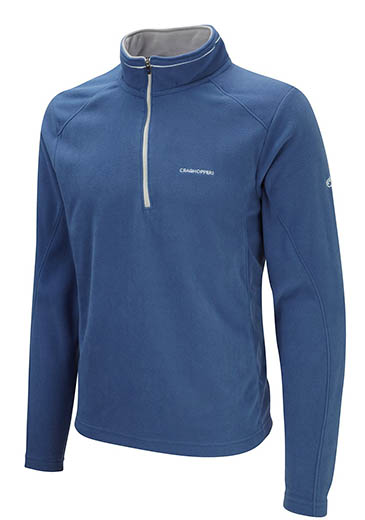
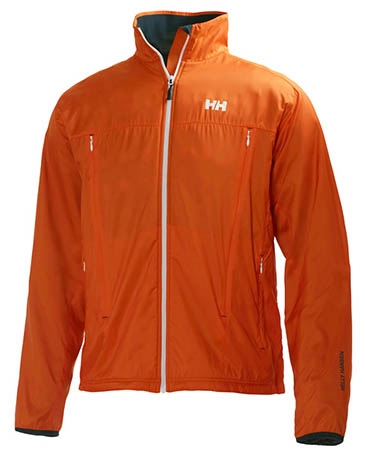
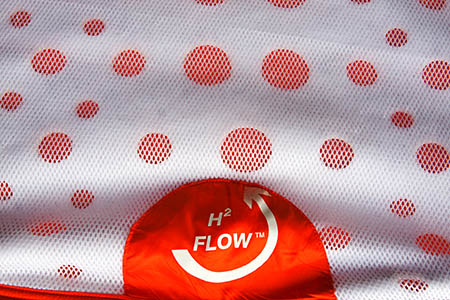
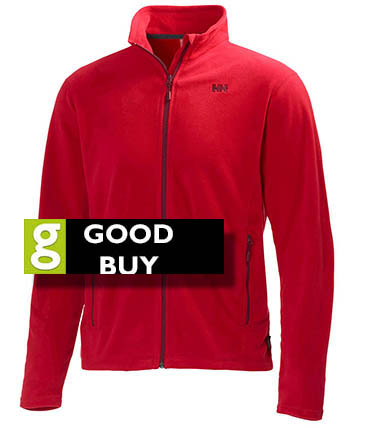
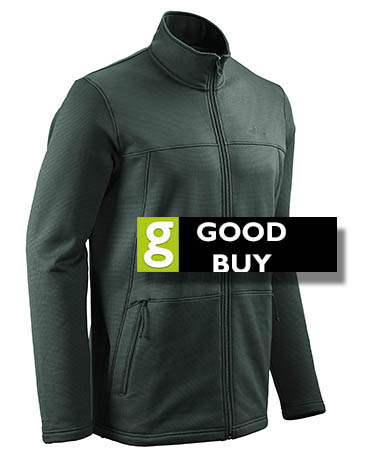
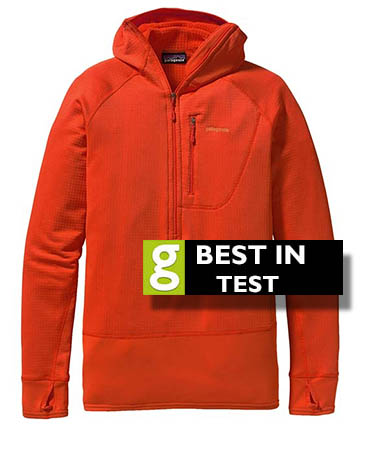
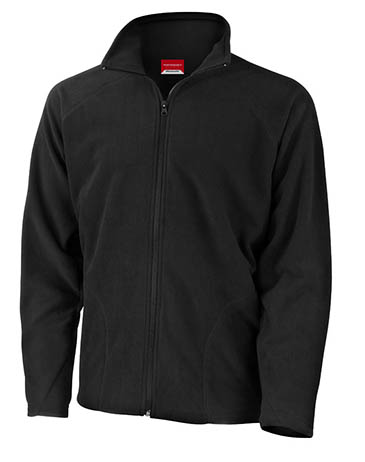
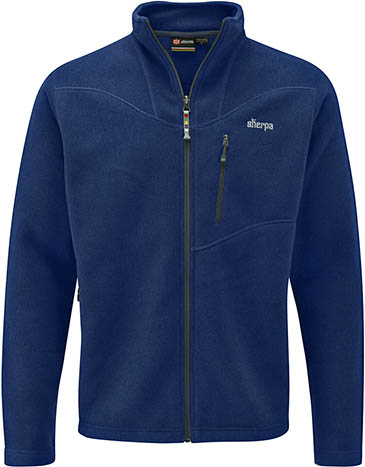
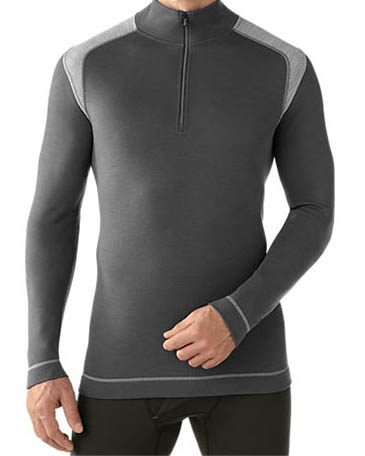
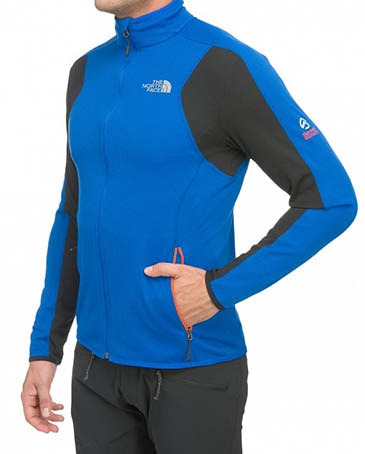
Jamie Kinsella
06 October 2013What about a review on Icebreaker products !